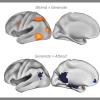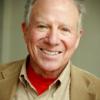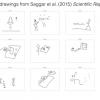News and Press Releases
Jun 3 2015 | Stanford Report
Real-time brain scans coupled with a machine-learning algorithm can reveal whether a person has memory of a particular subject. Now, Anthony Wagner and other scientists at Stanford have shown that, with a little bit of concentration, people can easily hide their memories from the computer.
Jun 2 2015 | Stanford Medicine - News Center
Carla Shatz has uncovered mechanisms that the brain uses to select which connections to strengthen or prune back as brain circuits form.
Jun 1 2015 | Neurotalk S4E14: Jernej Ule
Jernej Ule, Professor of Molecular Neuroscience at University College London, speaks about an RNA-binding protein called Nova.
May 29 2015 | Insights by Stanford Business
Is classic research on decision-making still relevant today?
May 29 2015 | BeWell@Stanford
BeWell spoke with Dr. Stuart Brown, founder and president of the National Institute For Play, about how play lights up your brain, improves your mood and connects you to the world.
May 28 2015 | Stanford News Services
Stanford Professor Bruce McCandliss found that beginning readers who focus on letter-sound relationships, or phonics, increase activity in the area of their brains best wired for reading.
May 28 2015 | Stanford Medicine - News Center
A new study is the first to directly implicate the cerebellum in the creative process. As for the brain’s higher-level executive-control centers? Not so much.
May 26 2015 | Stanford Medicine - News Center
A key message from Stanford’s annual big data conference was that realizing the potential of precision health means sharing massive amounts of medical and behavioral data.
May 25 2015 | Stanford Medicine - News Center
Researchers have figured out how to create spheres of neuronal cells resembling the cerebral cortex, making functional human brain tissue available for the first time to study neuropsychiatric diseases such as autism and schizophrenia.
May 21 2015 | Neurotalk S4E14: Nirao Shah
Nirao Shah, Associate Professor in the Department of Anatomy at UCSF, speaks about neural crest stem cells, circuits underlying sexual dimorphism, and his first exposure to research in India.













